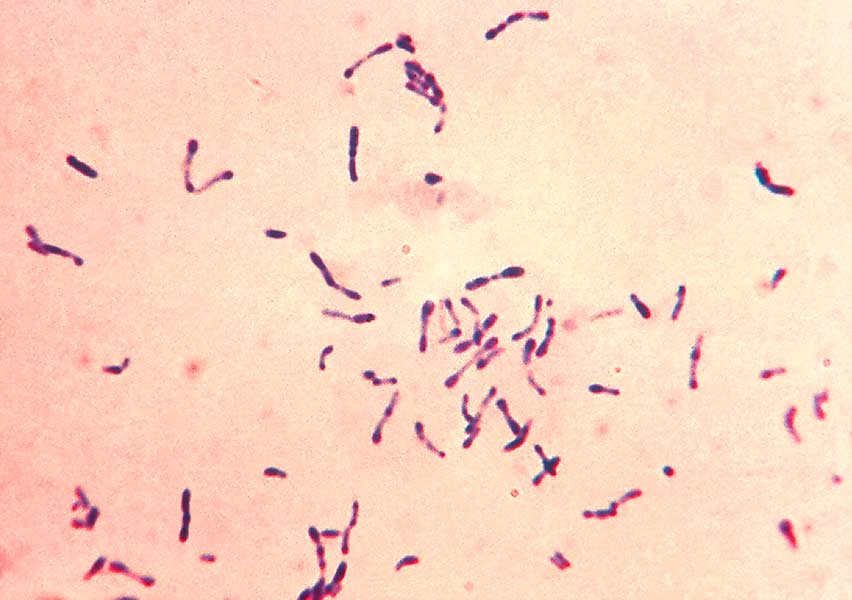Corynebacterium diphtheriae
Corynebacterium diphtheriae is a Gram-positive, non-spore-forming bacterium that causes diphtheria, a potentially severe acute respiratory infection. Transmission occurs mainly via respiratory droplets from infected individuals or asymptomatic carriers.
Clinical Features:
The bacterium colonizes the mucosa of the nose and throat, where it forms a dense, adherent grayish or blackish pseudomembrane that can obstruct the airways. It produces diphtheria toxin, which spreads through the bloodstream causing damage to the heart, nervous system, and other vital organs.
Symptoms typically appear 2 to 5 days after exposure and include:
- Fever and chills
- Sore throat and hoarseness
- Painful swallowing
- Barking cough (croup-like cough)
- Difficulty breathing and stridor
- Drooling (sign of possible severe obstruction)
Diagnosis:
Diagnosis is based on clinical presentation, microbiological culture, and detection of diphtheria toxin by molecular or immunological tests.
Treatment:
Treatment should begin urgently, even before laboratory confirmation:
- Administration of diphtheria antitoxin (intramuscular or intravenous)
- Antibiotics such as penicillin or erythromycin
- Hospital isolation to prevent spread
- Respiratory support including oxygen and possible intubation
- Continuous cardiac monitoring
- Intravenous hydration and bed rest

